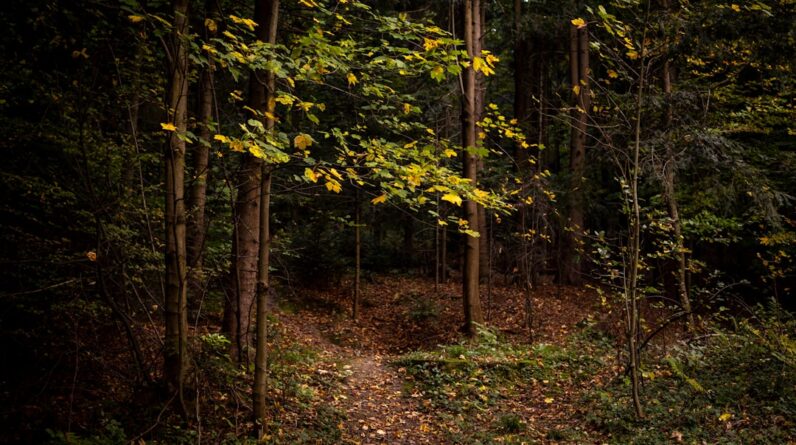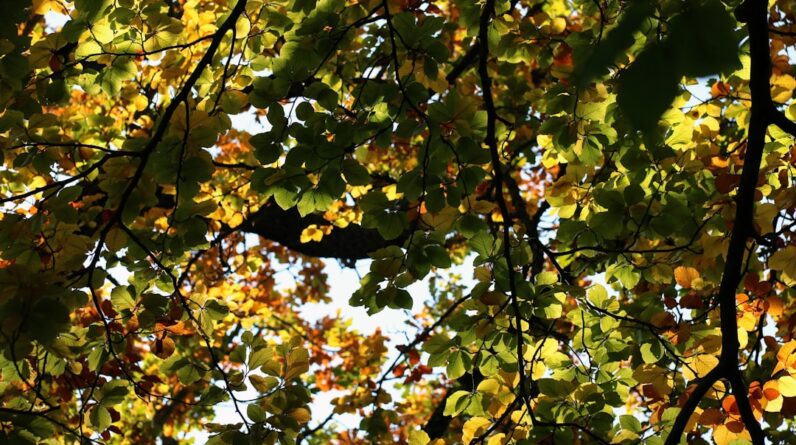Quebec City, located in the province of Quebec in Canada, is a city rich in history and heritage. From its founding in 1608 by Samuel de Champlain to its status as a UNESCO World Heritage site, Quebec City has a unique and vibrant cultural heritage that must be preserved for future generations. Preserving heritage is important because it allows us to connect with our past, understand our roots, and appreciate the contributions of those who came before us. In this article, we will explore the various aspects of Quebec City’s heritage and why it is crucial to protect and preserve it.
Key Takeaways
- Quebec City has a rich heritage that reflects its diverse cultural influences.
- The historic district of Old Quebec is a must-visit for anyone interested in Quebec City’s history.
- Quebec City played a significant role in Canadian history, particularly in the French-English conflict.
- French culture has had a profound impact on Quebec City’s heritage, from language to cuisine.
- Quebec City’s indigenous history is an important part of its heritage that is often overlooked.
Exploring the Historic District of Old Quebec
The historic district of Old Quebec is the heart and soul of Quebec City. It is a living testament to the city’s rich history and is home to numerous must-see attractions. The district dates back to the early 17th century and is the only walled city in North America north of Mexico. Its narrow cobblestone streets, charming architecture, and stunning views of the St. Lawrence River make it a popular destination for tourists and locals alike.
Some of the highlights of Old Quebec include the iconic Château Frontenac, which is one of the most photographed hotels in the world, and the Plains of Abraham, where the famous Battle of Quebec took place in 1759. Other must-see attractions include Place Royale, the birthplace of French civilization in North America, and the Citadel, a star-shaped fortress that offers panoramic views of the city.
Preserving Old Quebec is crucial because it allows us to experience firsthand what life was like in the early days of Canada’s history. It provides a tangible connection to our past and helps us understand how our ancestors lived, worked, and built this great nation. By preserving Old Quebec, we are ensuring that future generations can continue to learn from and appreciate this important part of our heritage.
Discovering the Role of Quebec City in Canadian History
Quebec City has played a significant role in Canadian history. It was the first permanent French settlement in North America and served as the capital of New France until it was captured by the British in 1759. The city’s strategic location on the St. Lawrence River made it a key trading post and military stronghold.
One of the key events in Quebec City’s history is the Battle of Quebec, which took place on the Plains of Abraham in 1759. This battle marked a turning point in the Seven Years’ War and ultimately led to British control of Canada. Another important figure in Quebec City’s history is Louis-Joseph Papineau, a political leader who fought for democracy and responsible government in the 19th century.
Quebec City’s history is important in shaping Canadian identity. It represents the struggle between French and British influences, as well as the ongoing quest for cultural and linguistic preservation. By understanding and appreciating Quebec City’s history, we can better understand our own national identity and the diverse tapestry that makes up Canada.
The Influence of French Culture on Quebec City’s Heritage
Quebec City’s heritage is deeply rooted in its French culture. As the first permanent French settlement in North America, Quebec City has a unique blend of French and Canadian influences that can be seen in its architecture, language, cuisine, and way of life.
The French influence on Quebec City’s culture and architecture is evident in its charming European-style buildings, such as the stone houses in Old Quebec and the grand Château Frontenac. The city’s language, French, is still widely spoken, and many street signs and businesses are named in French.
Preserving Quebec City’s French heritage is crucial because it is an integral part of its identity. It represents the struggles and triumphs of the French settlers who first arrived here centuries ago. By preserving this heritage, we are ensuring that future generations can continue to appreciate and celebrate the unique blend of French and Canadian cultures that make Quebec City so special.
Uncovering the Indigenous History of Quebec City
Before the arrival of European settlers, Quebec City was home to Indigenous peoples who had been living on this land for thousands of years. The Huron-Wendat, Algonquin, and Innu were among the Indigenous groups who inhabited the area.
The Indigenous influence on Quebec City’s culture and architecture can be seen in the names of streets, parks, and landmarks, as well as in the artwork and crafts produced by local Indigenous artists. For example, the Huron-Wendat have a strong presence in Wendake, a community located just outside of Quebec City, where visitors can learn about their history, culture, and traditions.
Recognizing and preserving Indigenous heritage in Quebec City is important because it acknowledges the contributions and resilience of the Indigenous peoples who have called this land home for thousands of years. It also provides an opportunity for reconciliation and understanding between Indigenous and non-Indigenous communities. By preserving Indigenous heritage, we are ensuring that their stories and traditions are passed down to future generations.
The Architecture of Quebec City: A Reflection of its Heritage

Quebec City’s architecture is a reflection of its rich heritage. From its historic buildings in Old Quebec to its modern skyscrapers, the city’s architecture tells a story of its past and present.
The architecture in Old Quebec is characterized by its European influence, with narrow cobblestone streets, stone houses, and grand churches. The Château Frontenac, with its iconic turrets and copper roof, is a prime example of the city’s architectural heritage.
In contrast, modern buildings like the Parliament Building and the Musée national des beaux-arts du Québec showcase contemporary architectural styles while still paying homage to the city’s history.
Preserving Quebec City’s architecture is crucial because it allows us to appreciate the craftsmanship and artistry of the past. It also serves as a reminder of the city’s history and the people who built it. By preserving Quebec City’s architecture, we are ensuring that future generations can continue to be inspired by its beauty and significance.
The Importance of Religion in Quebec City’s History
Religion has played a significant role in Quebec City’s history. The city is home to numerous churches, cathedrals, and religious institutions that reflect its deep religious roots.
One of the most iconic religious landmarks in Quebec City is the Basilica-Cathedral of Notre-Dame de Québec, which dates back to the 17th century. It is the oldest parish church in North America and is a testament to the city’s strong Catholic heritage.
Religious influence can also be seen in the city’s festivals and events, such as the Fête de la Saint-Jean-Baptiste, which celebrates the patron saint of Quebec and is an important cultural and religious holiday for many Quebecers.
Preserving religious heritage in Quebec City is important because it allows us to understand the role that religion has played in shaping the city’s identity. It also provides a space for spiritual reflection and worship for those who practice their faith. By preserving religious heritage, we are ensuring that future generations can continue to appreciate and celebrate this important aspect of Quebec City’s history.
The Cultural Significance of Quebec City’s Festivals and Events
Quebec City is known for its vibrant festivals and events, which celebrate its culture, heritage, and artistic traditions. These festivals and events play a crucial role in preserving and promoting Quebec City’s cultural identity.
One of the most famous festivals in Quebec City is the Carnaval de Québec, which takes place every winter. This festival celebrates winter activities such as ice skating, snow sculpting, and sleigh rides, and is a beloved tradition for both locals and visitors.
Other notable festivals and events include the Festival d’été de Québec, which showcases a diverse range of music and performances, and the Festival de Cinéma de la Ville de Québec, which celebrates the art of cinema.
Preserving Quebec City’s festivals and events is important because they provide a platform for artists, musicians, and performers to showcase their talents. They also bring people together and foster a sense of community and pride in Quebec City’s cultural heritage. By preserving these festivals and events, we are ensuring that future generations can continue to enjoy and participate in these important cultural traditions.
Quebec City’s Artistic Heritage: From Traditional to Modern
Quebec City has a rich artistic heritage that spans from traditional to modern art forms. The city has been a hub for artists, writers, and musicians for centuries, and their contributions have shaped its cultural landscape.
Traditional art forms such as painting, sculpture, and pottery can be seen in the city’s museums and galleries. The Musée national des beaux-arts du Québec houses an extensive collection of Quebecois art from various periods, while the Quartier Petit Champlain is home to numerous galleries showcasing local artists’ work.
In addition to traditional art forms, Quebec City also embraces modern and contemporary art. The city hosts numerous art festivals and exhibitions throughout the year, showcasing the work of local and international artists.
Preserving Quebec City’s artistic heritage is important because it allows us to appreciate the creativity and talent of its artists. It also provides a platform for artistic expression and innovation. By preserving Quebec City’s artistic heritage, we are ensuring that future generations can continue to be inspired by its vibrant arts scene.
Preserving Quebec City’s Heritage for Future Generations
Preserving Quebec City’s heritage is crucial for future generations. It allows them to connect with their past, understand their roots, and appreciate the contributions of those who came before them. It also provides a sense of identity and pride in their cultural heritage.
Efforts to preserve Quebec City’s heritage include the restoration and maintenance of historic buildings, the protection of archaeological sites, and the promotion of cultural events and festivals. These efforts require community involvement, government support, and public awareness.
Community involvement is crucial in heritage preservation because it fosters a sense of ownership and responsibility for the city’s heritage. It also allows for diverse perspectives and voices to be heard in the decision-making process.
Government support is also important in heritage preservation. This includes funding for restoration projects, legislation to protect historic sites, and incentives for property owners to maintain and preserve their heritage buildings.
Public awareness is key in heritage preservation because it helps educate the public about the importance of preserving Quebec City’s heritage. This can be done through educational programs, public outreach campaigns, and the promotion of cultural events and festivals.
In conclusion, Quebec City’s rich heritage is a treasure that must be preserved for future generations. From its historic district of Old Quebec to its French and Indigenous influences, its architecture, religion, festivals, and artistic traditions, Quebec City’s heritage is a reflection of its past and a source of pride for its residents. By preserving this heritage, we are ensuring that future generations can continue to learn from and appreciate the diverse tapestry that makes up Quebec City’s cultural identity. It is up to all of us to support and participate in heritage preservation efforts to ensure that Quebec City’s rich heritage continues to thrive for years to come.
Looking to maintain a healthy lifestyle while exploring Quebec City’s rich heritage? Check out this related article on Travelogs: “How I Lost 45 Pounds in Less Than 6 Months & Kept It Off: Shorts, At-Home Workouts, Weight Loss.” Discover effective weight loss strategies and get inspired to stay fit during your travels. Read more








